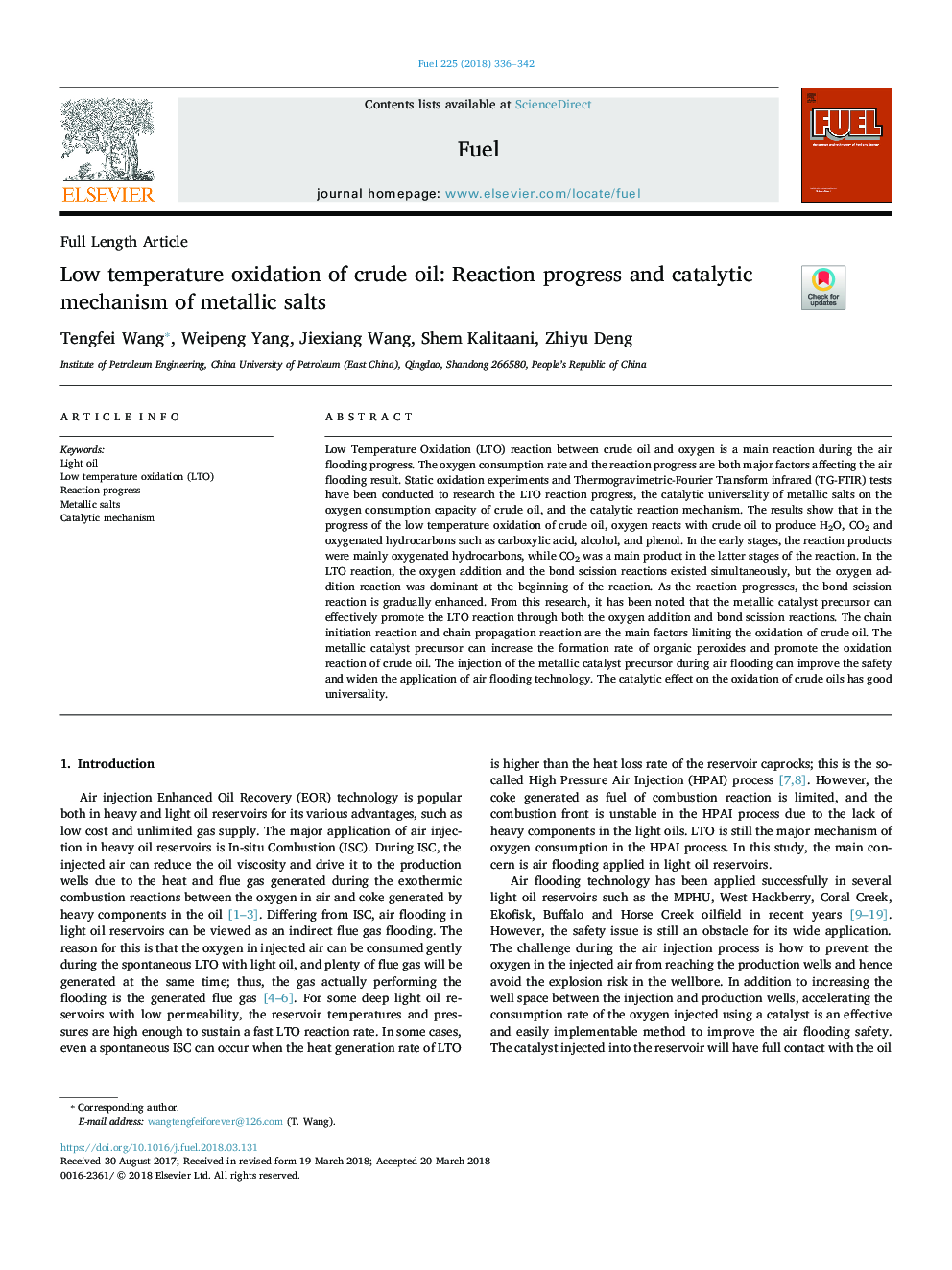| Article ID | Journal | Published Year | Pages | File Type |
|---|---|---|---|---|
| 6631016 | Fuel | 2018 | 7 Pages |
Abstract
Low Temperature Oxidation (LTO) reaction between crude oil and oxygen is a main reaction during the air flooding progress. The oxygen consumption rate and the reaction progress are both major factors affecting the air flooding result. Static oxidation experiments and Thermogravimetric-Fourier Transform infrared (TG-FTIR) tests have been conducted to research the LTO reaction progress, the catalytic universality of metallic salts on the oxygen consumption capacity of crude oil, and the catalytic reaction mechanism. The results show that in the progress of the low temperature oxidation of crude oil, oxygen reacts with crude oil to produce H2O, CO2 and oxygenated hydrocarbons such as carboxylic acid, alcohol, and phenol. In the early stages, the reaction products were mainly oxygenated hydrocarbons, while CO2 was a main product in the latter stages of the reaction. In the LTO reaction, the oxygen addition and the bond scission reactions existed simultaneously, but the oxygen addition reaction was dominant at the beginning of the reaction. As the reaction progresses, the bond scission reaction is gradually enhanced. From this research, it has been noted that the metallic catalyst precursor can effectively promote the LTO reaction through both the oxygen addition and bond scission reactions. The chain initiation reaction and chain propagation reaction are the main factors limiting the oxidation of crude oil. The metallic catalyst precursor can increase the formation rate of organic peroxides and promote the oxidation reaction of crude oil. The injection of the metallic catalyst precursor during air flooding can improve the safety and widen the application of air flooding technology. The catalytic effect on the oxidation of crude oils has good universality.
Related Topics
Physical Sciences and Engineering
Chemical Engineering
Chemical Engineering (General)
Authors
Tengfei Wang, Weipeng Yang, Jiexiang Wang, Shem Kalitaani, Zhiyu Deng,
